Primary Research
Primary research and sketching directly by observing was really helpful as it gave us the real idea of what it looks like and and in what medium should it be created in the sketchbook.
Sketching live gives a very clear idea of the shapes, textures and material by which it is constructed.
Sketching live also made me realise that any course of design can be affected or influenced by the other courses. I never thought that architecture is something I can be inspired by in order to create a texture or a material of my own.
Mana Morimoto


For Tokyo-based textile artist "Mana Morimoto" thread is therapy. Her first attempt at embroidery on paper was on one of her friend’s artworks, and she hasn’t turned back since. Morimoto’s fiber art is mostly geometrical, and always colorful and quirky. She sews directly on digitally printed photographs, ticket stubs, and the odd record sleeve.


Having found that black and white photographs make for more vivid compositions, she converts images into monochrome before printing them out on thick paper. Her embroidery patterns are inspired by her daydreams and crazy imagination.
Sophie Standing
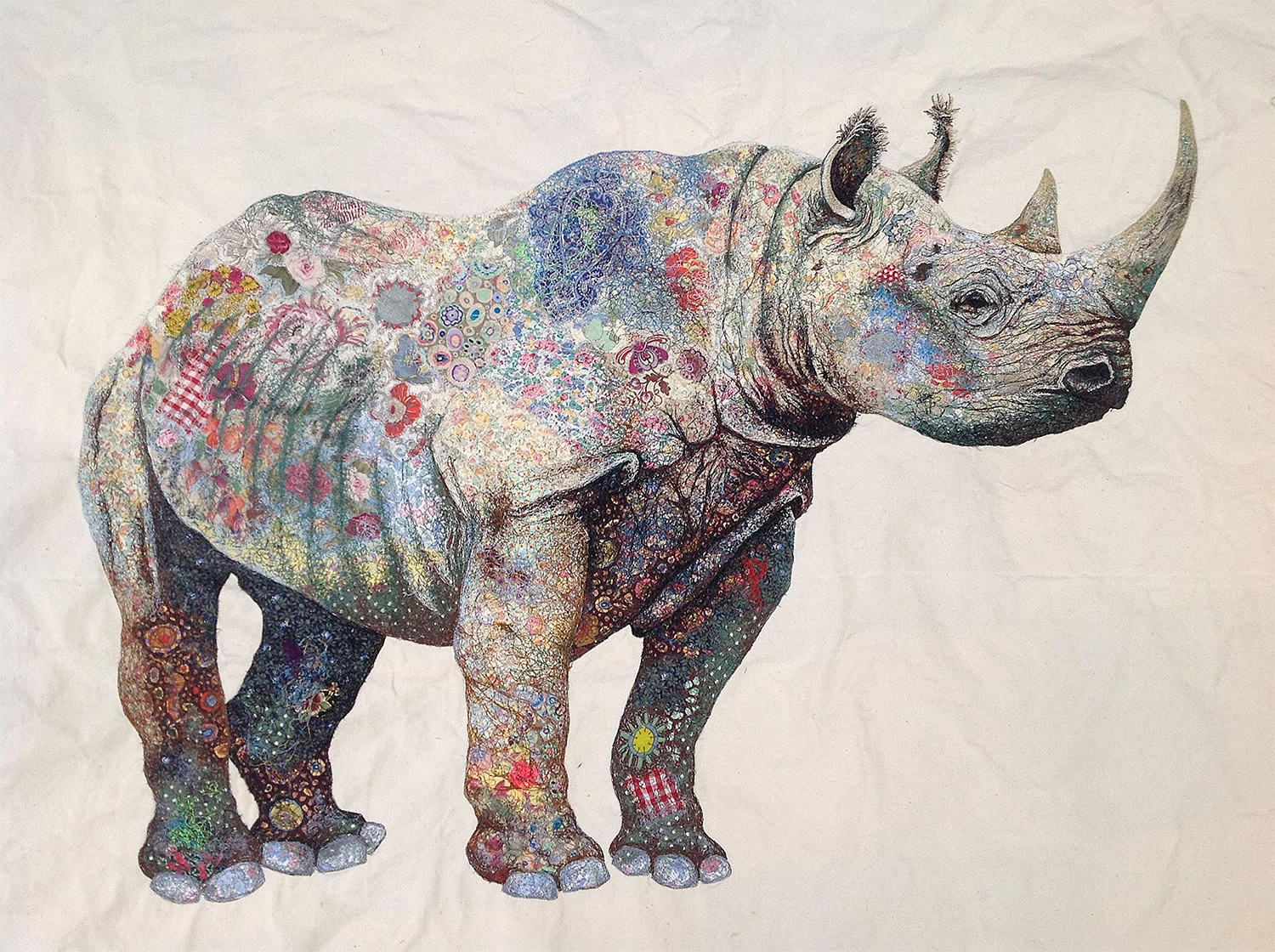
Artist Sophie Standing vibrant animal portraits were inspired by her move from England to Africa. Surrounded by flora and fauna, she combines this with her passion for fabric, textile, and embroidery. Her large one-off pieces are created using a mix of appliqué — which creates the overall form—and embroidered details over top which creates a sense of dimension and depth.
Juana Gomez
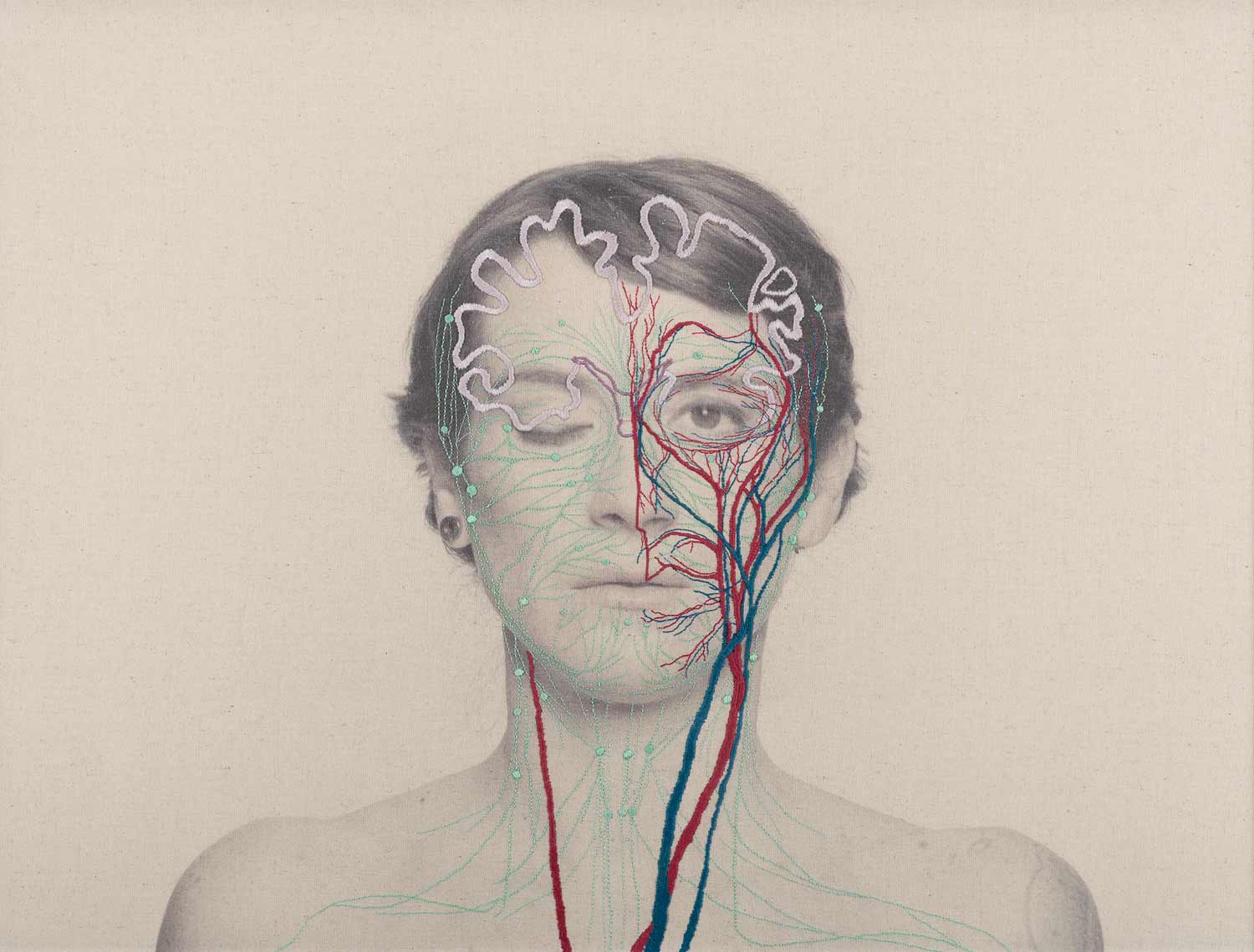
Embroidery by Juana Gomez is informed by nature and the processes that determine how organic beings are structured. In particular, she looks at the central nervous system of humans and stitches the connections between its different areas. By doing this, she is deciphering the body’s language and distinguishes a pattern that influences the biological, social and culture. Her artwork embodies these ideas with realistically-rendered veins, organs, and more.
Anonymours
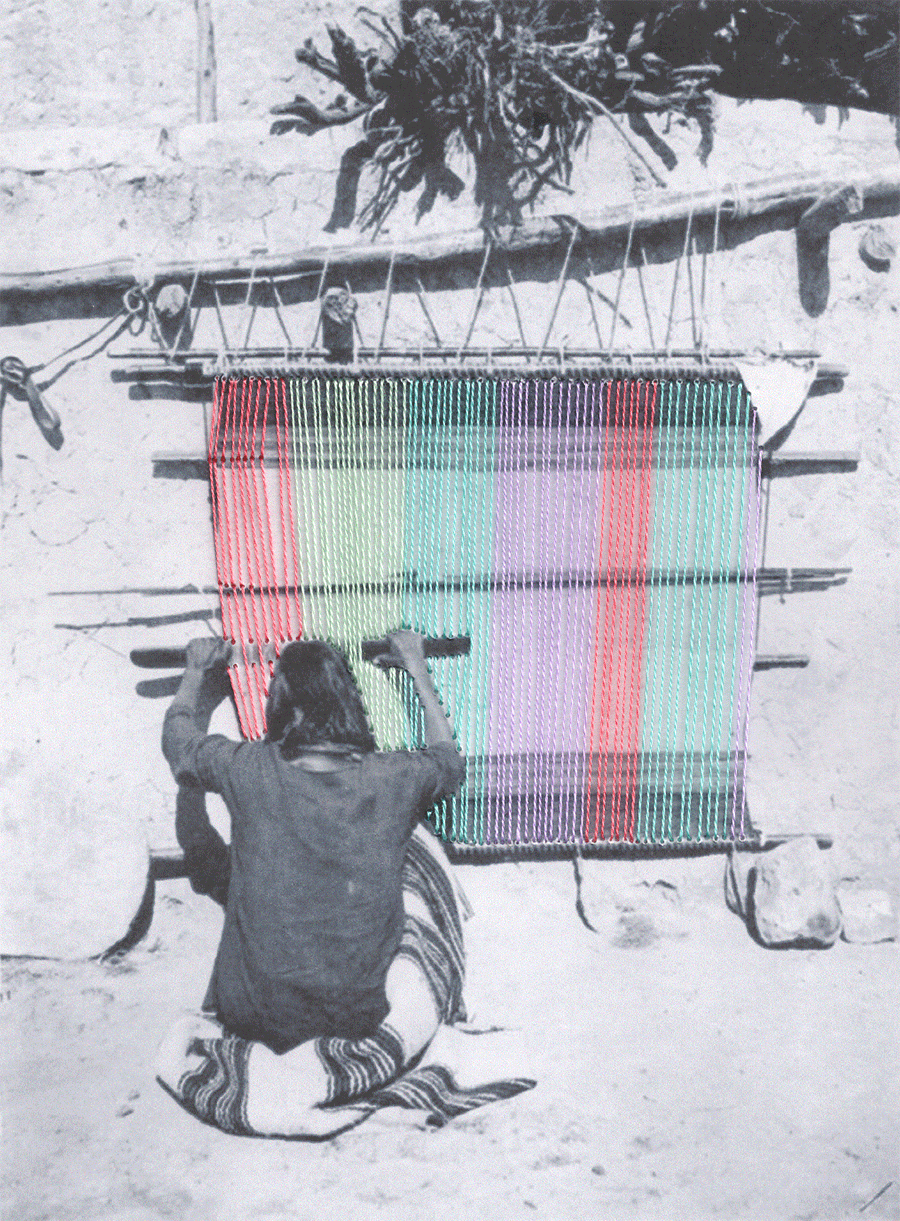
I really liked this artwork as it shows the process of the finished artwork. I like the fact that he has used monochromatic picture and added colour to it which is giving a very unusual chiaroscuro effect. I aspire to use this technique in my artwork.
Instagram (Art page)

I found this image while scrolling down on Instagram, I really like the level of hardworking and time the artist ,use have put in to make this. This is a type of work that I want to do. I really like the artists use of mediums. He or she has used medium on the basis of the what might reflect the texture of that building the best.
Primary Research
I visited three public artworks to gain a better understanding of the project, the helped me to have an insight of what the project is all about. The shapes and structure of the artworks were very unique and witnessing them made the projects and the whole sketching easier. I made rough sketches of the artworks which was part of my research as they would be further used in the assignment.
Body Postures
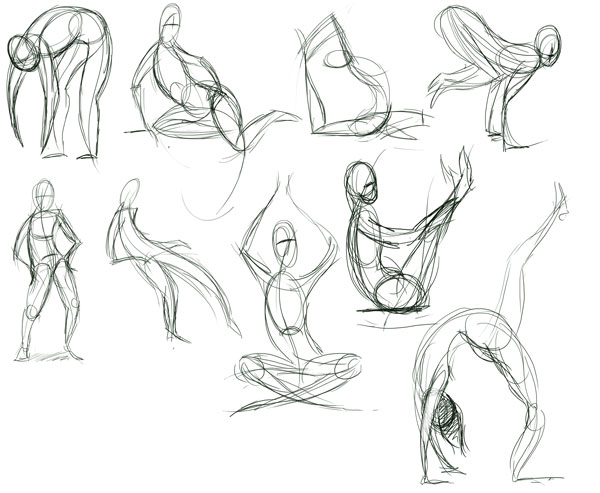
While researching I came across these body postures which I thought are really important to know while sketching. Most of the public artworks that I visited were composed of human figures so I research some body postures in order to sketch them correctly.
Fabrics
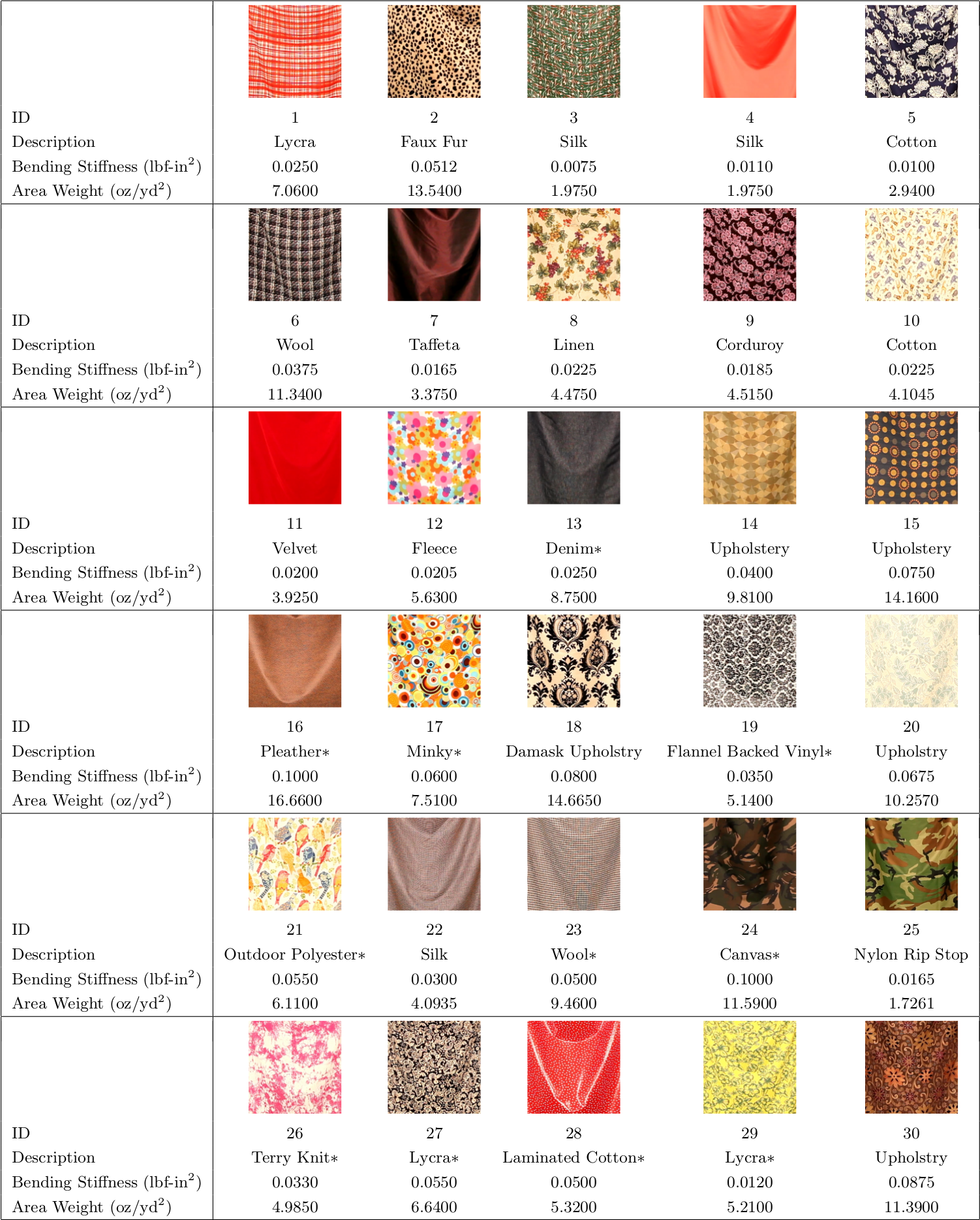
When I had to choose a fabric for my garment I researched lot of different cloth materials in order to be sure about what to use. All these materials were completely different from each other and felt different when worn or touched. They all have different advantages and disadvantages of wearing them. I had to choose the most apt for my design.
Giambattista Valli

Giambattista Valli at Paris Fashion Week Fall 2007 - I really liked the used of monochromatic colours here and the design is also very attractive and unusual at the same time
Design Drawings and Fashion Illustrations

 I
I
I researched the difference between "Design Drawing" and "Fashion Illustration" to which I came to know that design drawing is very accurate and has to be proportionate, the body has to be symmetrical and realistic whereas in a fashion illustration the sketches can be abstract, they don't have to abide to the rules of realism and can look like whatever you want them to look like.
Namaste
It is used both for salutation and valediction. Namaste is usually spoken with a slight bow and hands pressed together, palms touching and fingers pointing upwards, thumbs close to the chest. This gesture is called Añjali Mudrā or Pranamasana. In Hinduism, it means "I bow to the divine in you". We Indians believe that God resides in every Living being so we bow down t that God inside each one of you.
Shaun Higson

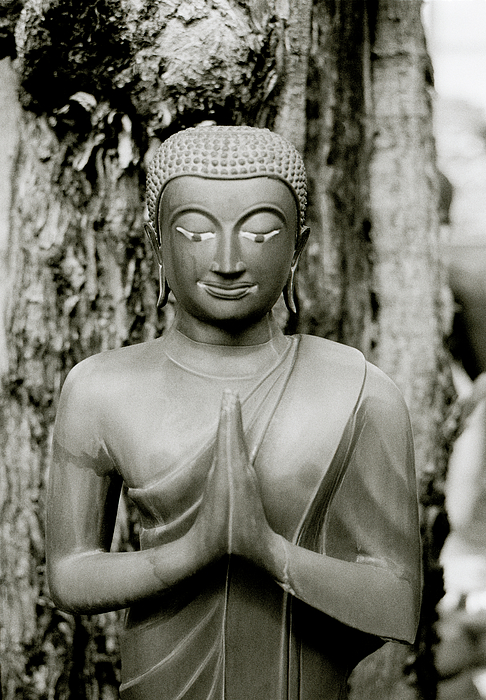
Shaun Higson is one artist who works a lot on Indian culture and traditions. He has gone around and in India to capture all his famous artworks. in all three of these photographs he has captures the sculpture in the posture of "Namaste". Also spoken as Namaskar or Namaskaram, this gesture is used to welcome guests or relatives, as well as for acknowledging strangers, and works both as salutation and valediction. The gesture is said to express honor, courtesy, politeness, hospitality and gratitude to the other person.

Importance of Namaste in old Indian texts

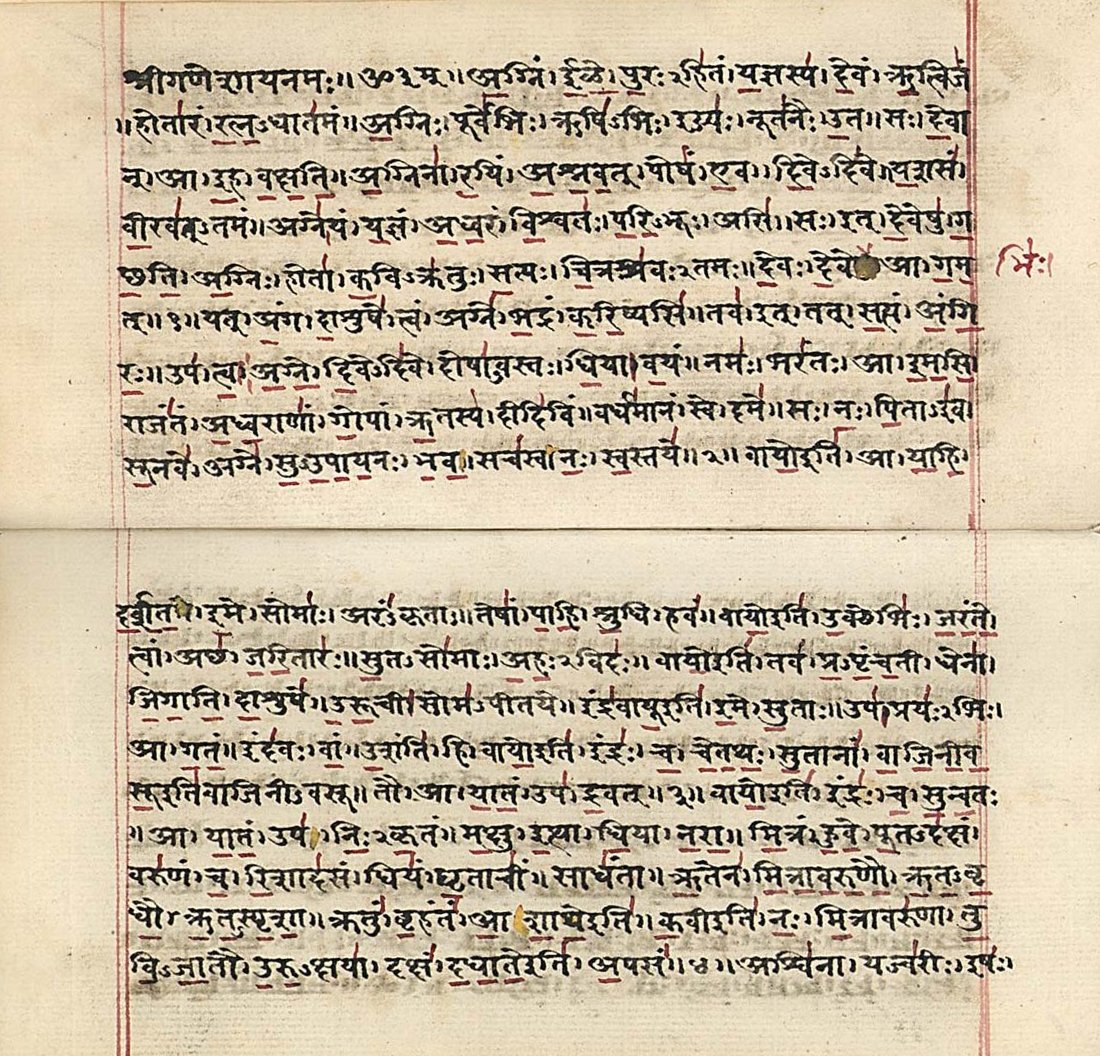
These texts are on of the oldest "Sanskrit" text in the world which tells us exactly why Namaste is important and why now should practice it.
Bindi
Through out my life I have seen women of my house wear this Dot called the "Bindi" in the middle of their forehead. everyone from my mom to my great grand mother wear it as it a very common ritual in India. Bindi is considered the point at which creation begins and may become unity. It is also described as "the sacred symbol of the cosmos in its unmanifested state"Bindi in the old times were only worn my married women as it is a symbol of marriage but nowadays it is worn my anyone as it has also become a fashion.
"Shyama Tara"

"Shyama Tara", with red bindi on the forehead, ca. 11th century CE, Ladakh, India. The Green Tara (Sanskrit: Shyamatara; Tibetan: Sgrol-ljang) was believed to be incarnated as the Nepali princess. She is considered by some to be the original Tara (star) and is the female consort of Amoghasiddhi (see Dhyani-Buddha), one of the “self-born” buddhas.
"Namokar Mantra"

This is one of the oldest prayer in India, which was taught to me when I was a child. Till this date I chant this every day in oder to worn off evil and start the day with a fresh and positive start.
"Pranama"

As an Indian there are some customs and traditions which are tight to you throughout your childhood. This for me was on elf them. From my childhood I have been touching feet if my elders whenever I meet them in order to pay my respect to them. "Pranama" is a form of respectful or reverential salutation (or reverential bowing) before something, or another person - usually grandparents, parents, elders or teachers or someone deeply respected such as a deity.
"Pranama"


The act of padasparshan (touching the feet) has a profound scientific reason. The nerves in the human body, starting from our brain, spread all over our body and end at our fingertips and toes. While doing padasparshan, when the fingertips of your hand are joined to the feet of the opposite person, a closed circuit is established between the two immediately and the energies of your bodies are connected – your fingers and hands become the receptor of that energy, while the feet of the elder person become the giver of the energy. When the elder accepts this respect, their heart becomes filled with good thoughts and positive energy, which they give out through their hands and feet.
Neighbourhood project (Primary Research)
We visited Peckham area in London for the neighbour project. It was a very eerie area as it was full of empty streets. It was quite different from the countries me and my partner belong to.
Lino Printing Tutorial
I saw a tutorial of Lino printing in order to gain an insight of the technique. it w as really an enlightening session and it also cleared a lot of my doubts about the printing technique.
Brian Reedy
Brian is my absolute, number one, take my hat off in respect favourite lino or wood cut artist. I bloody love and respect his work. If you don’t follow him, follow him. His style speaks for itself, but what i really like is his themes that centre around film culture with a distinct nod to Japanese wood cuts. He owns this style. If you like 20th Century pop culture from Star Wars to Ziggy Stardust, you cannot fail to enjoy his work.
Jeff Fellows
John is smashing it, I love his style. His linoprints are full of references to mountains, alpine trees and pick-axe wielding, pipe smoking miners. His style is similar to a few of the North American artists I’ve mentioned in this article, but at the same time completely unique. It still refers to the great outdoors and frontiers folk that pushed the boundaries out west looking for gold but his character style is completely his own and very unique. What I like the most is his subtle use of muted colour tones, the way that his lines all follow contours of the surface they describe and also the way that John has started to print on top of maps – amazing!
Call Conway
Cally has a lovely style that she has developed with a focus on plants and animals. Lots of people have one thing that they are really good at and I think that you have to respect the way way she can render hair or fur. That might sound like an odd thing to say but I really think it’s worth pointing out because it’s actually quite hard to do well. She also does some great simple work with colour and colour gradients, definitely worth a look.
Weft Making process
I searched for a clear diagram to understand how the weft making process is done . It made it easier for me to learn as it was my first time.
How to Weave Wide Binding Cane
I watched a video on how to weave a binding cane. It helped me to have a better understanding of how things work in a weaving process.
Lucy Poskitt
Vancouver-born, Victoria-based textile artist Lucy Poskitt is a contemporary weaver walking the line between traditional image-based tapestry and yardage weaving. Working with a looser and more experimental hand, Lucy draws inspiration from local landscapes and lore, especially the ambiguous stories and symbols we use to explain our place in this world.
Judith Scott
Working at a frantic pace, Scott would wrap yarn, fabric, and other colourful fibres around found objects. like broomsticks and shopping carts, often engulfing these items so thoroughly that they would become unrecognisable.
Gabriel Dawe
When one first looks at this artwork, it feels as if it would have been done on the computer or it is a paper manupiliation technique, such is its illusion. Gabriel Dawe's site specific colorful installations seem like fragmented rays of light frozen in space. The body of work was exhibited in the atrium of Villa Olmo in Como, Italy, in the context of Miniartextil an annual exhibition of contemporary art linked, in one way or another, to textiles.
Ana Teresa Barboza
I really like how this artwork is so minimalistic yet so detailed. I love the use fo colours and inspiration, by this artwork we can clearly tell that the artist was inspired by the ocean and its colour scheme. I love the sample that he has created and would love to incorporate it in my experimentation. By the use of embroidery and knitting in her work Ana Teresa Barboza yearns to create a parallel between the process of manual crafts and creating and natures process. She contrasts the two, by creating structure with yarn which resemble the threads of a plant and similar structures.
Melissa Zexter
I really like this paper manipulation technique and would love to incorporate in some of my samples. Melissa Zexter combines hand-stitched embroidery with photography. Using photographs she has taken herself, she sews onto them, irreversibly altering the image by adding a new layer.
Shades of Red
For this project I searched all the shades of red to decide what to incorporate in my project.
Jonathan Gabb
Gayday Braket Lines (rear view)
Jonathan Gabb is an artist who uses a combination of ‘fine art’ materials and more prosaic materials – mixing acrylic paints with varying proportions of PVA glue and mastic to thicken and plasticise the paint. He likes to try and maintain the intensity of the pure original colour of the paint in his works and also tends to favour bright, vibrant colours: Cadmium Red or Opera Rose. He enjoys colours and combinations of colour many would consider too bright or even ‘jarring.’
Nobutaka Aozaki | Joy Drury Cox | Via Pinterest
For this project, we were taught how to curate our project, in the sense how we should place our products and materials onto the presentation sheets. This was a good way for us to know and to be sure abour how to carry on ouyr projects.
Portfolio Presentation
We were given this portfolio preparation sheets which helped me a lot through the entire making of the portfolio. It was a consultation sheet for me, whenever i thought i was going wrong, i consulted thid sheet in order to be sure.
Research ( Portfolio presentation link)
http://1granary.com/inside-central-saint-martins/foundation-students-2015/
While researchiong I came across this site which was very helpful throughtout the making and my portfolio. The portfolio examples in this site helped me in the form of reference.
Reference Example
Lanyard
When one thinks about lanyard this is the stereotypical image which we think about.Lanyard is a cord which passes round the neck, shoulder, or wrist for holding a whistle, ID card similar object
Text
Every year in July, artisans come from countries around the world to participate in the International Folk Art Market in Santa Fe, New Mexico. Last week, I was fortunate to have been invited to participate in a pre-market gathering of fiber artists at the Esponala Valley Fiber Arts Centre. It included artists from New Mexico and 10 artists from other countries who were here for the Folk Art Market. In my excitement about the event, I volunteered to make 50 lanyards (see above photo) to be used as name tags for the event ~ ASpinnerweaver blog
http://aspinnerweaver.blogspot.com/2015/07/the-lanyard-project.html
Knitting
In order to experiment with the lanyard project i decided to experimnent with knitting, for that i watcheda tutorial on the process.
Hindu religious significance of wearing a nose ring (Nathani)
In the Hindu culture, for all women, the nose ring is a symbol of being married. It is believed that a girl should only wear a nath on the day of the wedding and continue to wear it till the time she is married. Getting the nose pierced is also seen as paying respect to Goddess Parvati.
Health benefits of wearing a nose ring (Nathani)
Historical Importance
A Nath ( Nose Ring) has been worn by Indian women from centuries, earlier it was also considered as a benchmark for class , money, relgion and power but now it is a fashion symbol.
Basic Macrame Knots: Simple Square Knot Tutorial
Distinct Design by anonymous artist
Burcu Buyukuna (Terrifying Beauty)
Burcu Buyukunal is a designer from Turkey.I have chosen this artist as I find the content of her work very inspiring. In her words she “is driven by conventions and societal norms relating to the body prevalent in history both past and present.” Buyukunal’s works such as “Terrifying beauty” reflects this endeavor,questioning certain ideas of beauty and jewelry by drawing on the rising trend of plastic surgery to make one’s self more beautiful relative to the traditional function of jewelry as adornment.
The artists intent was to have the viewer question ideas related to identity and through analysing Buyukunal’s work this helped me refine my own ideas of identity.
House of Malakai
While researching i came across thid site wherwe i found a very interesting pair of ear cuffs design. i found the design quite intriguing and different. The way it is put on the ear is appealing to the eyes and catches the attention in the first look.
Edward Crutchley
Intriguing Shape
This artwork helped me decide the shape of my original artwork. The way this artwork is built is really eyecatching , it makes us completely forget about the dface behind the rtwork and its importance in the phtograph. The entire focus is on the artwork.
Aleksandra Daila Kalnins
Aleksandra Daila Kalnins 'Beauty in Disease' sterling silver dimensions variable Jewellery and Small Objects. This artworks helped me decide the placement of my artwork.
ELIZABETH WOLL-USA
This artwork helped to understand the body structure and what body parts shoudl support by artwork. I also used arms as a support system for my lanyard project.
Punjabi Silk Bangles
These are the traditional silk bangles of Punjab,India. It is worn by Punjabi women during traditional and auspicious days, mainly on festivals as they also symbolize happiness and coulorfulness. I took the techniques of ravelling threads around the bangle to give it this look.
Tania
Tania was a Polish-born, New York based, Jewish American abstract painter, sculptor, collage artist, and painter of city walls.She was active in the New York art world from 1949 to 1982, but is perhaps best known for her 13-story geometric wall painting of 1970, which still stands at the corner of Mercer St. & 3rd St. in Greenwich Village, New York.
CHRISTOPHER BIERLEIN.
A new exhibition in New York is showcasing the delicate art of origami - used to create exquisite objects from miniature animals, to avant-garde fashion designs. This design helped me to decide the shape and structure of my artwork.
AMILA HRUSTIC
Product design graduate Amila Hrustic of Bosnia and Herzegovina has created a collection of dresses embellished with clustered geometric shapes. The Plato Collection is inspired by the five different Platonic solids - tetrahedron, cube, octahedron, dodecahedron and icosahedron, which are recreated in paper and attached to fabric in different configurations.
Lorenzo Vitturi
In the beginning of the denim project i started resewarching about threads and different shades of blue. While researching i came across this artwork. i really liked how threads and their color becomes the most important aspect of this artwork, that gicves it a certain kind of importance which is contractdicting in real life.
LIBBY KINNA
“THREADS OF LOVE”
I came across this weaving and knitting artwork while researching for the depth o the project. In the beginning i was not abel to understand the meaning of the porject and what we have to do, so i was randomly searching for clues through the internet which can spark an idea and show me the way.
Shades of Blue
Crocheting Artists
An art exhibition in China puts a new spin on classic artworks by recreating the famous pieces in the form of crochet.The exhibition in Shanghai features famous artworks including VIncent Van Gogh's Starry Night recreated by crocheting artists. Crocheting involves using interlocking loops of yarn, thread or other material to create a fabric.
Faustine Steinmetz
Speaking about her personal style and unique methods, Steinmetz said: “I create pieces that everyone has or has had in their wardrobe at some point in their life, except I make them from scratch using artisanal techniques.”. With a focus on sustainable, or ‘slow’ fashion, Steinmetzexplores our contemporary relationship with buying cheap, disposable clothing. Instead of mass producing thousands of cheap pieces, Steinmetz spends many hours meticulously and lovingly working on each of her designs – the result is a more sustainable, less wasteful collection of gorgeous artisan denim pieces.
Boro sodenashi
Rebekah Campbell
i really found this fashion photgraphy quite interesting and different. The way both the faces has been covered very evidently shows the artistic qualities and creativity of the artist. The denim has also been cut quite interestingly, in long strips in order to hide the body parts.
Magazine Covers
c
Denim has proved to be one of the most successful inventions in the clothing business. It has and is being used as a daily wear and is still in fashion after beimg invented decaded ago. it has been part of everyone's daily routine and has become a casual wear. Denim is used in a lot of magazine photoshoots for covers.
Invention of Denim and Jeans
Denim Ideas
During the denim project, we were told to create sampled of denim in our own translation of the theme of the project. While researching i came across some ideas which helped me create my own samples.
Aashish
Ashish at London Fashion Week Fall 2014
Hanne Friis
For a while now I’ve been admiring the work of Norwegian textile artist Hanne Friis. Her sculptures are created by gathering and bunching various materials (latex gloves, stockings, denim) into these sumptuous, undulating shapes.There’s a bodily aspect to all her sculptures, particularly her work with velvet. When I first saw these works I was reminded of tripe and various other entrails (time spent training as a butcher has imprinted these textures on my mind) but the more I look the less I see guts and gore, and the more I see the sculptures as an embodiment of a sexual desire or tension, heightened by the connotations of the materials – velvet, latex and stockings.
Rebekah Archer
Sustainable fashion design. Hand woven Jacquard using naturally dyed indigo silk and linen, and copper thread brocade. Zero waste garment pattern.
www.rebekaharcher.com
Miriam Ponsa
Faustine Steinmetz
Denim Head
I really liked the theme of this artwork, the concept of making a brain with denim is really unique and interesting. The denim has been very carefully folded and given a shape of this dixtinct design and pattern.
Tutorial on How to bleach and dye Colour
Lucy Adjoa Armah
These wearable denim fashion is made by a student/alumini of London college of fashion. i really like how through fashion and style the face of the models have been hidden from the audience. This made me think about the Muslim women who wear Burqa aas part of their relegion and not fashion adn how they have to cover their face in front of the world.
Why do Muslim women cover their face ?
Contradicting the notion
Senza titolo
This sculture by "Senza Titolo" is an embodiment of his thoughts about the burqa system. He has compared this rigid social constraints towards women and the entire reason behind it to garbage.
NIKE CAMPAIGN
RARELY does a piece of sporting clothing get this much attention. But rarely does a global sports manufacturer bring out a garment specifically for Muslims.
Nike has launched a hijab custom designed so that a Muslim woman who wants to cover her head can still work out.
As you can imagine in the current climate, an iconic US brand making a product just for Muslims has divided opinion. There are those who commend Nike for taking into account their specific needs of a proportion of their customers, and those who accuse them of being complicit in the subjection of women.
Launched in a blaze of publicity, Nike said the new product was created in collaboration with several Muslim athletes.
“The Nike Pro Hijab has been a year in the making, but its impetus can be traced much further back to Nike’s founding mission, to serve athletes, with the signature addendum: If you have a body, you’re an athlete,” the company said in a statement.
"Blue Burqa" by Jennifer Guidi
I really liked this print which spoke to me in ways it wasn't supposed to.I thought to myself that the very basic and fundamental reason why a woman wears burqa is to cover her face or head which showcases modesty, but that can be done in a fashionable way as well. It does not have to be this boring and black. it can be colourful (but subtle) and it can still do whatever it is supposed to do.
Graphic Pornography ( Tumbr page)
The very reason to wear burqa is to keep modesty and not draw attention, but when you are wearing this, will it not force everyone to see and look at you, even those who were not supposed to. But this is what we have to understand, we should be able to do whatever we want in our own way, without asking for permission, and without thinking what the other person might think, becausew we are here to live and not fear.
http://graphicpornography.tumblr.com
I really enjoyed this page as it is breakibg barries and social restrains in more than one way.
Malu Halasa
c
They want to bridge the gap between east and west but they are just seen as trouble-makers. Malu Halasa on the new generation of Arab women artists
Mercedes-Benz Fashion Week (Russia)
Shark Burka. Sorry, I Am Not F/W 2016 Runway Collection Show
Fashion in Show Business
Burqa has also been used as fashion symbol by many celebrities such as Lady Gaga.
Inwards and Outwards (Primary Research)
Amila Hrustic
“Amila Hrustic” is a Prague based art director and idea maker. I came across her while researching for the Lanyard project. She influenced my ideas and thinking as I was really impressed by what she makes. Most of her artworks consist of wearable geometric shapes which take the viewer far away from the conventional idea of what we call a dress. The way she has used the shape in her artworks kind of gives rest to the eyes of the person looking at it. It's just mesmerizing. Her artworks also reaffirm that a dress can be solid and 3D and that it doesn’t always have to be a flowy piece of cloth. Her artworks are also in a way similar to a chameleon, as a chameleon adapts to the surrounding her dresses too change the shapes of the body it is put on, which brings us to the best part about it which is that it can be worn by any body size because at the end of the day it changes what you look like.
When you look at her dresses, it feels as if they are hard and rigid and might restrict motion but one can never know that they are in fact comfortable to wear from the inside. It kind of builds a bubble of private space around the person wearing it which nobody can cross. I borrowed the idea of using geometric shapes in my personal artwork. Use of geometric shapes always makes the product look well organized and properly arranged. I too wanted to run away from the conventional look of a lanyard but at the same time wanted it to be a little connected to how it is normally used, therefore decided to connect the nose, ear, side of the neck and the shoulder through my lanyard.
“Lucy Adjoa Armah”
“Lucy Adjoa Armah” is an undergraduate in fine arts from Central Saint Martins who went on to do womenswear in London college of fashion. I came across Lucy while researching for ideas to go about for my denim project. Even though we both worked on completely different topics, it was still extremely relatable and easy for me to join the dots. I was astonished by her artworks and the entire look of them. I loved how denim as a material was used to cover the faces of the models when I related it to my project it looked artistic and was also fulfilling the purpose. Through this, the very essence of my theme could be extracted. Though she hasn’t used any other material to go with the denim, it still looks captivating and to be honest quite interesting and engaging to the audience. I also liked the fact that she hasn’t used only the conventional blue denim but also explored the different colors available in the same material. Overall the entire look is giving me a very high street chic look which I can imagine a Beverly Hills star walking out in. Not only is it looking good on the ramp but will also be wearable outside of it. The entire look gives a very rough look as a denim clothing is supposed to look like. The ripped square pattern really catches the eye of the viewer as it is quite repetitive and all around the body. My personal project was about changing the traditional look of a “Burqa” and giving it an entirely new look through denim, retaining its modesty and yet making it fashionable for Muslim women. What contradicts here in Lucy’s artwork to the normal burqa is that a normal burqa covers the face and leaves the eyes open whereas here the eyes are covered and the rest of the face can be easily seen.
Nike Hijab Campaign
From the beginning of the denim project, I wanted to work on religion. Even though there is no connection between religion and denim I wanted to trace some relationship between the two. While researching I came across this campaign by Nike which I thought was one of the best new age movements. There is a very less representation of Muslim women in the sports industry mainly because of the lack of clothes that are suitable for them in that level of competition. It was two or three years ago when “Amna Al Haddad” while training for the Rio summer Olympics, got the call from Nike saying that they wanted to sponsor her and feature her in the “Inner strength series” which only showcased inspiring athletes. Though “Amna” coming from a strict orthodox Muslim family where women were not allowed to penetrate into sports and require them to adhere to the religion’s dictates on modest dress, she still did not stop believing in herself and paved a way for herself. When Amna who very proudly wears the head covering known as Hijab, even when she is competing, got under the Nike campaign, the company’s research team was keen to find solutions as to how to improve her game and her performance. After a lot of research, they realized that Amna’s need was much basic then what they were thinking. She needs a head covering that stays in places and reduces her sweat production and dries quickly, and this is how they found their next big thing, The Nike Hijab.
I was really inspired by the kind of market research Nike put before making something and also they proved that they cater to all kinds of people. I was motivated to convert the burqa into something fashionable yet modest and true to their religion.
Nathani (Nose Ring)
I can’t help but connect my culture to the artworks I make, maybe because I am so strongly connected to my culture. It can prove to be either positive or negative. I take pride in my culture and where I come from to depict that through my projects. During the time of my lanyard project, I was searching for a way to connect it to my culture when I got this idea. A Nathani is a nose ring generally adorned by married women back in India, it plays as a symbol of marriage. Some also believe that it’s a circle of life. Wearing a nose ring is also seen as paying respects to Goddess Parvati (Indian goddess). Nose rings have been worn by Indian women since centuries which has now turned into a tradition. In urban India, nose rings are more of a fashion symbol and are worn only on special occasions. I have grown up watching my mother and grandmother wear it during weddings and auspicious gatherings.
Everything that we Indians do has a scientific explanation to it, the Indian scriptures were the first ever texts found in the world. It is all based on acupressure, Ayurveda, and healing. Even wearing a nose ring has health benefits behind it. It is believed in the Ayurvedic sciences, that if the nose is pierced on or near a particular node on the nostril, it gives relief in the pain during periods. Also, another theory says that piercing done on the left nostril as the nerves on that side connect to the female reproductive system and thus, during childbirth, the pain is comparatively less. I made a Nathani in my lanyard project to connect the ear and the nose which eventually connected to the side of the neck and shoulders.
